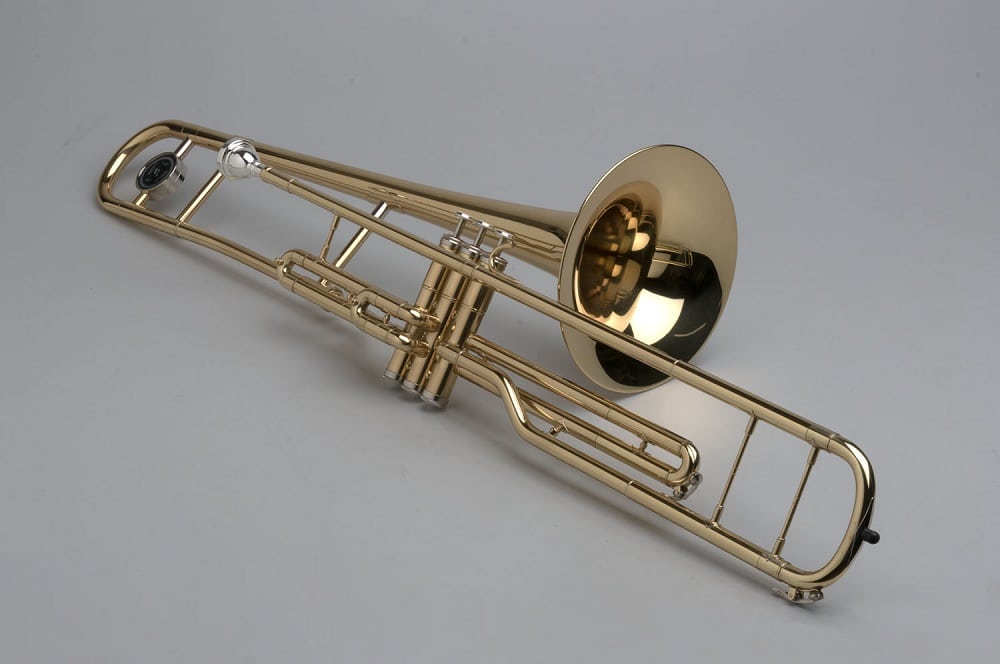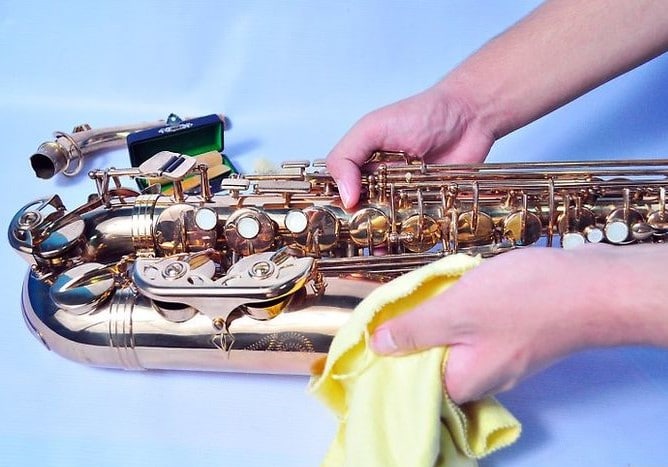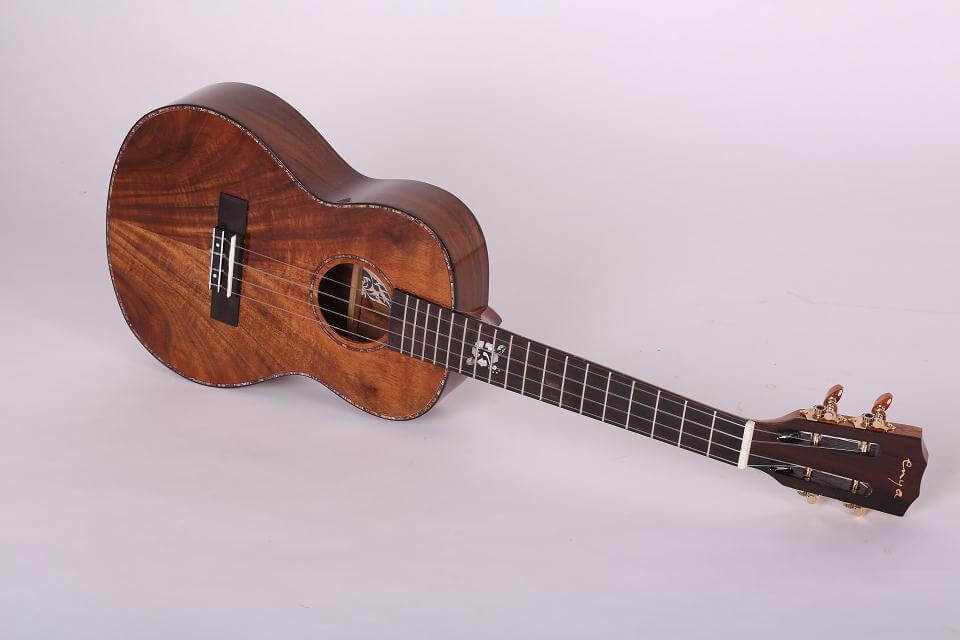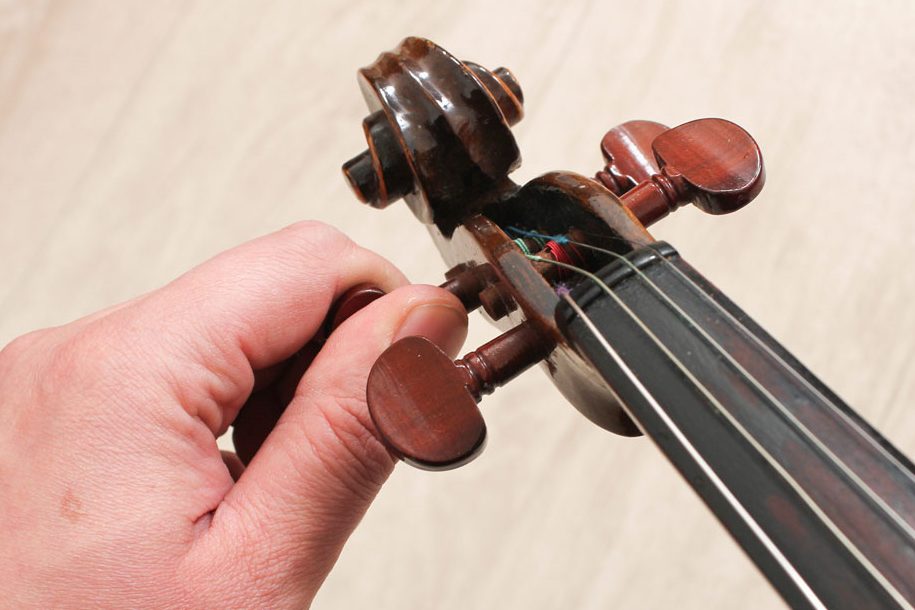PRS Guitars started the production in 1985, but did you know that the inspired Paul Reed Smith (PRS himself) started learning how to build guitars when he was just a teenager?
Compiling the list of the best PRS guitars, we took a hard look at guitars which favored not only stronger neck and body materials, but also materials which added to the sounds of the music they were designed for play. Scale length and the accompanying fretboard were equally as important seeing as one controls how many notes can be played and the other controls the sound of the pitch and the artist’s overall ability to pluck notes and stop notes. We’ve looked at more that 24 different models and came up with the 6 best ones, and the PRS S2 Vela turned out to be the top choice.
More features: PRS plate-style bridge system, low mass locking tuners, volume and push-pull tone control with 3-way toggle pickup selector
Taking the standard 6-string guitar to a whole other level, this bold and classy looking instrument ties in a unique bridge system with two sound intensifying pickups.
The body, top, and neck are full mahogany, giving the guitar that vintage dark glow; with 22 frets the fretboard is sleek rosewood and ends in a PRS plate-style bridge. As you’ll play you’ll notice a bright and punchy tone created because of the PRS-designed Starla humbucker in the bridge and the Type-D single coil in the neck. Of course, these sounds will only register fully on pedalboard or amp, so make sure to take full advantage of the volume and push-pull tone control to crank your music up.
Additionally, a second 3-way toggle allows you to select between your pickups and even split the Starla pickup into single coils to explore an increased range of tones. The brass saddle along the bridge will give you greater sustainability and perfect intonation while you play, and your rhythm and lead tones will sound great no matter the venue!
More features: Hipshot TransTone bridge system, two volume controls and one tone control, Hipshot HB6 tuners
Sporting one of the most unique body designs – top and body made from swamp ash wood – this guitar gives off a southern vibe that matches nicely with its lengthy neck made from maple with a walnut bracing joint. With four strings this is a tenor guitar, it also has a 34-length scale but uses the typical rosewood fretboard with 24 frets; this guitar will stretch your fingers!
The typical sound of this guitar is sweet and warm with a fundamental tone, and the unique swamp ash body creates double the balance and sustainability of any note. Dual SE 4B ‘H style’ pickups are active or passive humbuckers that provide top end clarity while playing, along with a lot of punch; the sound might best be described as old-school tonal, something most modern basses have been missing.
Additional elements include two volume controls and a one tone control which will allow any musician to use the humbuckers for excellent jazz tones. The Kingfisher guitar has a modern signature sound with old-school tones that will grab an audience’s attention.
More features: nickel PRS-designed tuners and stoptail, volume and tone controls for each pickup and 3-way toggle pickup selector on upper bout, gig bag included
You’d think any list that has a ‘budget pick’ includes a guitar which isn’t as good as the others, but not only is this an exceptional instrument it also allows for the smoothest playing with vintage tones.
The instruments body is made from mahogany that is very thick and full and adds to the overall sustainability, the top is maple and beveled with a flame maple veneer. Together the mahogany neck and rosewood fretboard run a 24.5 scale length with 22 frets, which explains the smooth playing and ability to jump between chords with ease. In fact, any guitar with a shorter scale length will make bending notes easier and will give your strings a slinkier feel and sound.
Electrics include dual 245 S style humbucking pickups which have that real dirty and punchy sound to them (similar to those heavy metal and rock sounds). Chords on both pickups will sound full and broad and are designed with PRS tuners and a stoptail bridge as well as 3-way toggle switch controls for either pickup. A great gig bag is also included with this purchase.
More features: hard-shell case included; Fishman GT1 acoustic electronics; Tonare Grand body shape
The PRS brand is known for its solid body electric guitars. However, did you know that the brand also makes acoustic guitars? Well, they do, and these are excellent. The only issue that these acoustic options have is their price. They are made to high standards, and that is reflected in the cost. Well, the company forayed into the budget market with the SE line of acoustic guitars, but those didn’t really meet the demands of the market.
The brand then changed all of that in 2018 as they released a brand-new line. The PRS Paul Reed Smith SE Tonare T50E is one of the best from this new line of affordable acoustic guitars.
It offers some really impressive features that we found to be really good. For one, it comes with a design that allows the top to vibrate while the guitar remains pretty stable.
Apart from that, the tone produced is one of the best that we have tested. It comes with pretty dope tops and good details. For example, it comes with ebony fretboards, bone saddles, and abalone purfing. All of these are available in a relatively affordable guitar.
When compared with similar products from other manufacturers, it still holds up pretty well.
More features: satin nitro finish, volume and push/pull tone control, 3-way toggle switch, gig bag included
This guitar offers a return to the roots of rock and roll with the maximized tone and clarity provided by using 18/15 pickups. At first glance you get a snap and response which comes from the bolt-on neck that sports maple to pair well with a mahogany backed guitar and smoothed maple top. Additionally, the fretboard is clearly mahogany and has 24 frets for a 25-inch scale length.
The neck and fretboard sport a Pattern Thin carve coupled with a gorgeous satin-nitro finish that is addictive to touch and play. The pickups (PRS 85/15) are designed to provide remarkable clarity along with an extended range of play (high end and low end). Electronics also include a 3-way toggle switch for controlling the volume as well as a total of six classic sounds.
Finally, purchase of this guitar also comes with a protective gig bag for safe travel to all your venues that will not only protect your guitar but also keep it warm and in tune.
More features: PRS Stoptail bridge system, volume and push-pull tone control with 3-way blade switch, prs low mass locking tuners
This is also easily the best electric guitar for metal music. Why metal? This guitar has a unique Mira S2 bridge pickup which not only creates that higher output but also adds a rich sparkle and substantial with a very tight low end. Put simply, it’ll give you all those high wailing notes along with deeper tones that will vibrate an entire venue.
At first look, however, this guitar body is all mahogany with an asymmetrical beveled top. The one wood difference is the rosewood fretboard – with 22 frets – and the reason rosewood is used here is because pressing cords against rosewood creates better pitch control and ‘stopping’ of notes than many other woods. Controlling your notes along a long fretboard is especially important when you’ve got a six-string instrument with a 25-inch scale length.
Additional elements include 3 locking tuners for the best and most consistent pre-tuned sound during a set, and a volume and push-pull tone control 3-way blade switch built into the body of the guitar. Few instruments can match this guitars understated and refined appearance or even it’s explosive tone when overdriven into well-rounded rock tones.
The remainder of our guide is designed to explain little known odds and ends about the PRS brand and its guitars, and it includes a detailed look at the features of these guitars and how those features behave and work and which guitars best exhibit each feature the best. We hope this information allows you to easily choose and purchase the best PRS guitar.
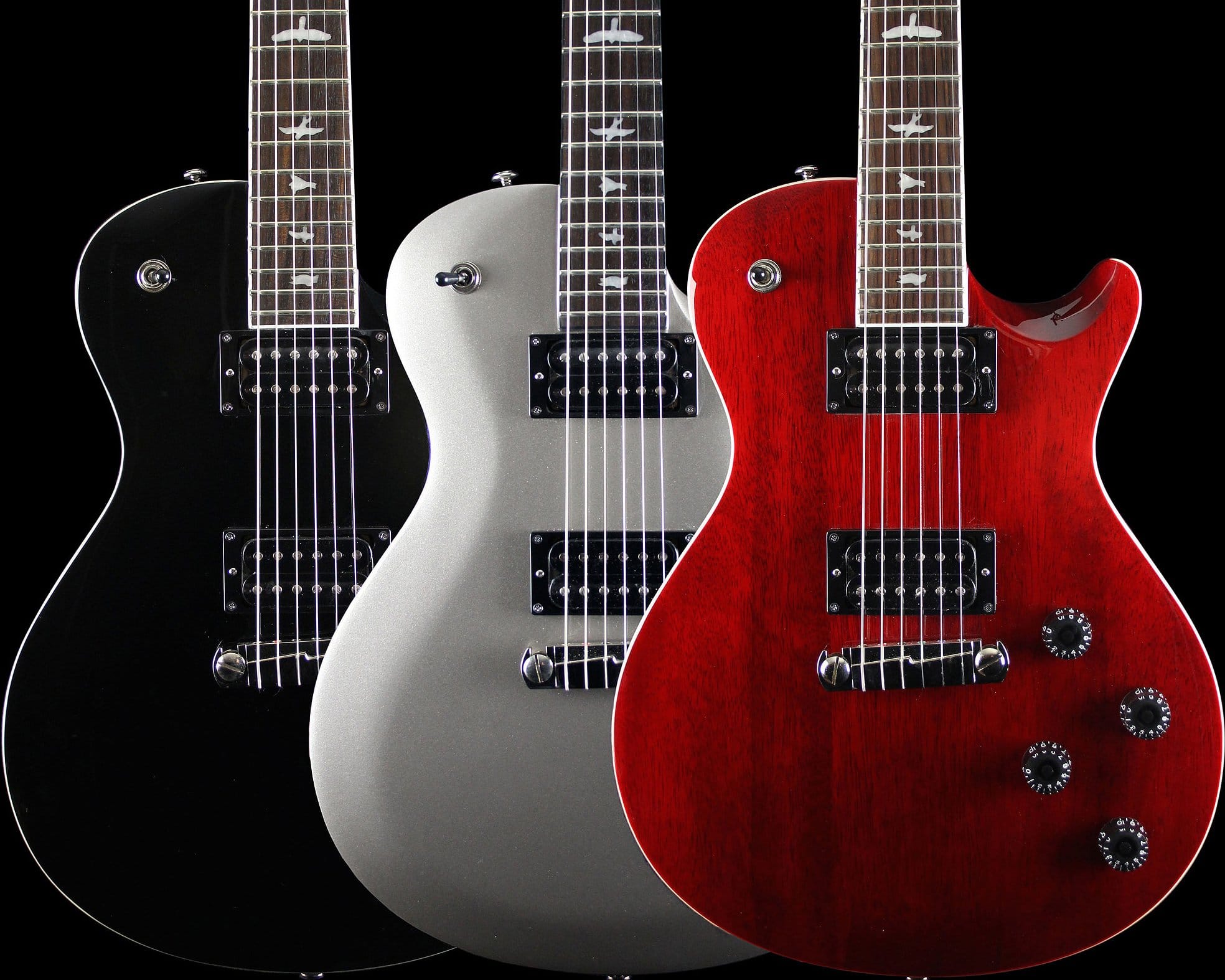
Take for instance Les Paul guitars, because often when you go into a guitar shop you’ve got to try out at least 9 lower quality designs before you find a decent guitar to take home on your 10th try. Usually, Les Paul guitars (in store at least) have major tuning issues with woods that dent or warp easily in the cold (or when hot during the summer). Though some may not prefer the very metal sound of Paul Reed Smith Guitars, at least musicians are guaranteed that the manufactory will maintain the best quality standards for every guitar they produce.
These guitars are of high quality for a great price, and they also typically come with a dependable tremolo bridge, hardy tuning keys, a great headstock shape, and overall functionality well over those other vintage appointments.
PRS guitars are guaranteed to use premium high-quality materials, and just by looking at the different guitars listed above there is no questioning this. With PRS guitars you will only ever see full-wood designs with rosewood or ebony fingerboards (typical rosewood as this wood is better).
Next, you’ll only ever see tuners which are either lockable or made from thick wood or heavy metal components; PRS guitars do not easily go out of tune. The pickups may not be the best and may have more of a metallic grating sound (common with this brand), but PRS guitars often feature more than one pickup and have obvious designated places to connect these electromagnetic sound transferring devices.
Most importantly, with PRS guitars you’ll get that classic warm shape (rather than the weird modern designs) – you can expect to have tuners on both sides of the neck, an obvious wooden bridge, the typical rounded guitar body which is either full or hollow, and all volume dials within the closest reach of your fingers while playing.
You may have noticed many of the following features listed in the detailed reviews of each PRS guitar above, here we examine each feature and explain how it effects the overall design and playability of your guitar.
The debate over whether a guitars body wood type effects the sound and playability of the instrument is widely argued between musicians. Most experts, however, insist that even though it’s the pickups that take the sound and transmit it to an amp, the vibrations from your strings still have to travel through the bridge and nut into the wood neck and body before the pickups can… well, pick them up.
For choosing the right body, understand that for electric guitars it’s more the weight and density of the wood that matter – the heavier the wood the brighter and more articulate an instrument will sound. For instance, Alder wouldn’t be a very good body wood because it’s so light (although it does create more of a southern tone). Rosewood is very similar to alder, but it’s only used on the fingerboard so that the tone is lighter while the body of the guitar – let’s say mahogany – can create a deeper and darker tone. The PRS S2 Mira is like this, bold but also capable of those delicate notes.
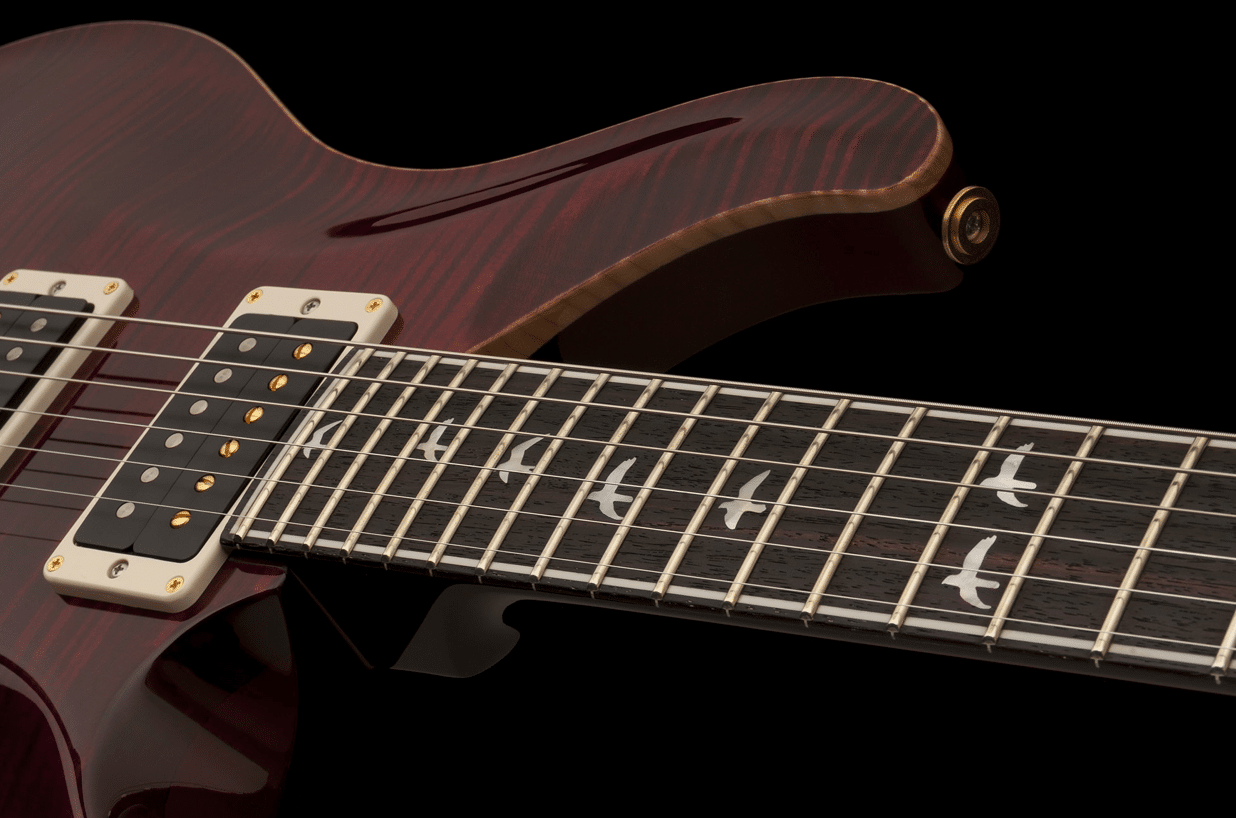
Other elements to consider are of course the neck wood type and how that affects the guitars overall sound, now there are far too many wood types used in neck design for us to go over each one, but a great example of guitar with good neck-wood is the PRS Paul Reed Smith SE Tonare T50E which uses standard mahogany to emphasis the mid-range notes with a non-abrasive tone.
As you’ll see, most PRS guitars feature a rosewood fretboard design, and typically this wood type defines a sound that’s warmer with a high end (you’ll often see Rosewood paired with a Stratocaster body). One guitar on our list which breaks this trend is the PRS Paul Reed Smith SE Tonare T50E which uses ebony for a bright sound with lots of sustainability.
Now, if you’ve never encountered a fretboard (or guitar) before, this part feature is a very important component in stringed instruments. It’s a long strip of wood typically laminated or bolted to the frame of the guitar and strings run along it; pressing your strings down to the fingerboard (while they’re vibrating) is what allows a musician to change the vibrating length and thereby the pitch.
Tuners and tuning heads (the cogs at the top of the guitar) are very important components for achieving a pure and correct note on your guitar – assuming you use the tuning heads to accurately tune your guitar. The important things to remember about tuners in relation to an electric guitar (and PRS guitars) is that the different woods of a guitar can actually dramatically affect the starting tune of your guitar after you’ve taken it out of the case. Warmer woods like Maple can cause your guitar to quickly go out of tune during the time during the day(s) you aren’t playing before a gig. A guitar like the PRS CE 24 with a maple neck will need a little extra love in the tuning department.
The bridge is the point where there’s a fixing point for the strings, and generally there are two types of bridge systems: fixed bridges and moving bridges. Often moving bridges are called ‘tremolo bridges’ and you’ll most commonly see these with electric guitars like these PRS guitars. Typically tremolo bridges have a bar which you push or pull to increase or decrease the tension on the strings which will control the intensity of volume while you are playing.
Tremolo relates to volume control, whereas vibrato bridge systems relate to pitch control. The PRS SE Kingfisher Bass Guitar is a good guitar to look at because it has a unique bridge system (the Hipshot TransTone bridge system) which mainly controls the tone while you’re playing and allows for a punchier sound.
Pickups relay a signal to a connected guitar amplifier which they pick up from being attached to your instrument (usually next to or under the bridge) and this signal, in turn, is transmitted through the amp as sound. Differences between guitar pickups can be major, for instance, a single coil pickup has a single magnet for each string and create more of a humming sound. Humbuckers with double coils, on the other hand, have different magnetic polarities to cancel out the humming sound and ring out with clearer and louder notes. It’s our opinion that humbuckers are the best pickups for PRS guitars; the PRS SE 245 is a great example of this.
Only purchase guitars with volume and tone controls, you’ll want the extra control over that often-unbridled electrical sound. The best of these controls are ones which are directly on the body of the guitar so that you can flip the toggle switch and adjust settings while you’re playing. Most PRS guitars feature this direct control.
As stated before, the wood type will somewhat affect the sound of your instrument – though of course there is some debate. One thing which will definitely alter the sound of your guitar is the pickup(s)and whether they are a single coil or not. Other concerns – such as the type of music you naturally play – are best approached by looking at each individual guitar we’ve listed; nearly all of them list the best type of music they can play, or the tones and sounds they’re best at making. For an improved sounding you might need to pick an amplifier but worry not, there are many budget-friendly options for under 200 and 300 dollars.
This is largely a feature of preference, one main thing being that full body guitars will sound much deeper and metallic than guitars with hollow designs. The color and wood are also a design factor, and so is the neck length and shape. For more specifics and the history of PRS guitar designs – of which there are many – you can visit their website and look at the different models.
Finally, we always like to leave our readers with a look at what we think are the top three models! Not only do we think this will make picking a PRS guitar easier, but we also think it’ll assist you in choosing the best PRS guitar.
PRS S2 Vela. What we really love about PRS are their electrical solid body instruments; this one is a great choice and lends itself really well to rock and pop sounds with bright and punchy tones.
PRS SE Kingfisher. This guitar’s body is made from swamp ash wood, which gives it a one-of-a-kind look, and its neck is long and made from maple. Walnut reinforces the joint between the top and the body. With four strings, this guitar is classified as a tenor guitar. It has a 34″ scale length but still uses the typical rosewood fretboard with 24 frets; playing this instrument will really stretch your fingers!
PRS SE 245. You rarely see a guitar that’s both really high-quality and also very affordable; this guitar offers that mixture! Not only can the beginner to intermediate musician afford this beautiful instrument (with a gig bag included), but it also offers dual pickups and multiple controls.
If you still think that your quest to find the perfect guitar is not over – try looking at other high-quality products by different brands, like Ibanez guitars.
